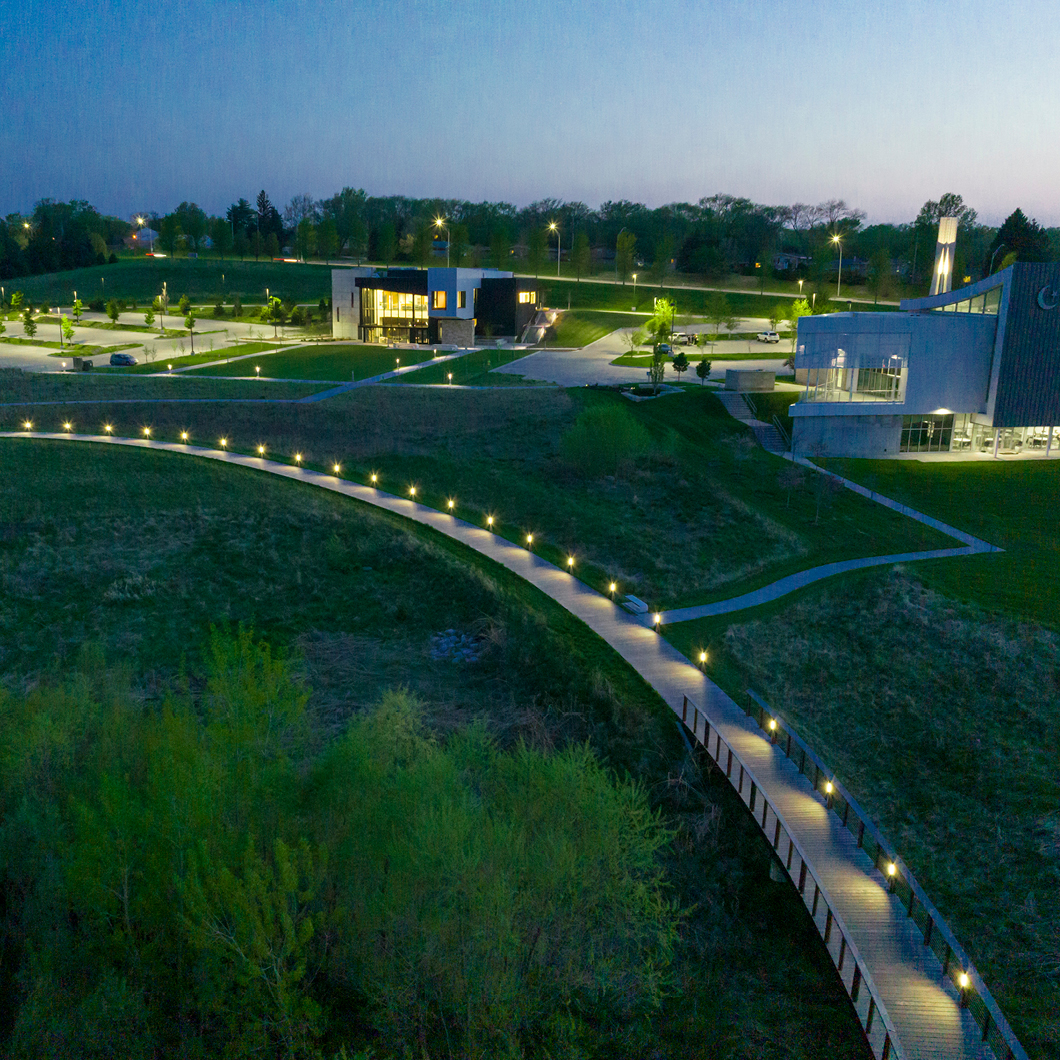April 24, 2024
Celebrating World Landscape Architecture Month
Tri-Faith Commons & Abraham’s Circle
Through innovative engineering and landscape architecture, Abraham's Circle symbolizes the Tri-Faith Initiative's mission, promoting dialogue and understanding. The completion of the Tri-Faith Commons in 2020 represents a milestone in nurturing respect and cooperation among diverse communities. We had a chance to chat with John Rasmussen from TEN x TEN, about the landscape design on this project:

Interview with John Rasmussen

What is your favorite element of this project?
Abraham's Circle! During the ideation process when many concepts were being explored, the idea of a big move that represents unity emerged. All three faiths are considered Abrahamic religions because they have Abraham as their first prophet, and one of the main drivers of the design process was highlighting the things that unite us while allowing the individual faiths to represent themselves proudly. Abraham's Circle is situated in the center of the development between all three faiths and acknowledges the common bond that unites these faiths together.
How did the overhead view of the space inform the design process?
The way aerial photos can capture the wholeness of the space wasn’t really something we were reflecting on, however while designing this in the plan, we had a firm understanding of the powerful symbolism that could emerge from the design.

What did you enjoy the most about the design process for this project?
We had the pleasure of working directly with leaders and members of all three faiths representing their church (Countryside Community Church), synagogue (Temple Israel), and Muslim Institute (American Muslim Institute). The wonderful conversations we had during the design process on the things that unite us all had lasting effects on all who had the opportunity to be part of the process. It was also amazing to collaborate with people who wanted to live out and commit to guiding the vision for this space.
What was most challenging about this project?
Once the idea of a unifying circle emerged, we thought the greatest challenge would be building consensus with the faith leaders to commit to this vision: constructing two bridges over Hells Creek instead of one, focusing the programming of this space on walking in unity with one another around the ¼-mile circle, and accepting the idea that a landscape move can be a part of the way the Tri-Faith Initiative lives out its mission. Thankfully, all three faith organizations fully supported the move! The most challenging design aspect of this project was placing a perfect circle within a landscape that has rolling topography and wild vegetation, and needs to cross bodies of water.
Was there any aspect of the design that had to be abandoned or altered due to restrictions with the natural landscape?
The landscape didn’t have any negative impact on the overall design. The existing landscape was a huge asset for the project because it offered a beautiful, wild experience on day one. We spent a lot of time exploring how to situate this circle within the existing conditions, so it didn’t have much of an impact on the already-beautiful landscape.

